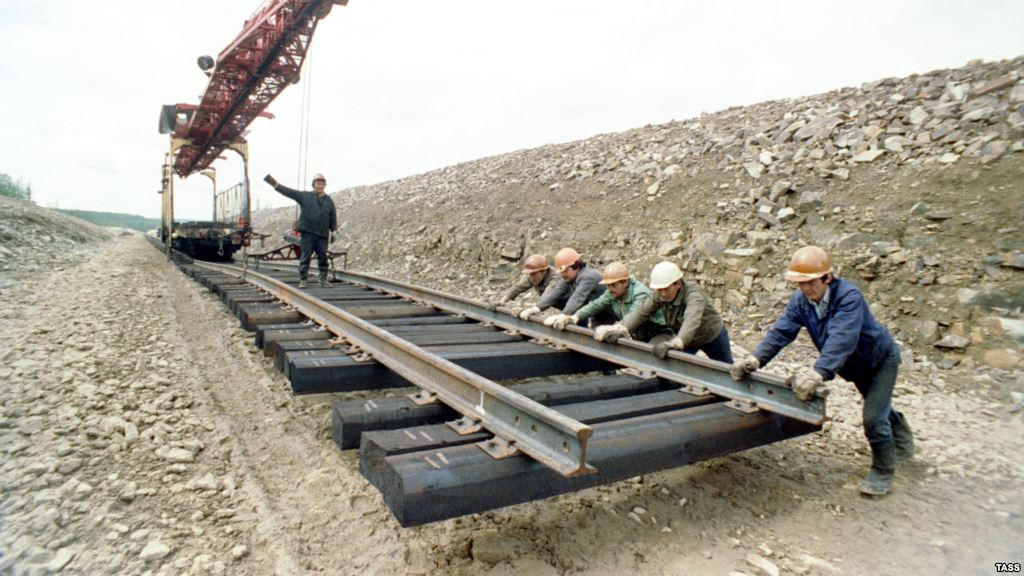The Ministry of Transport of Tajikistan and the Korea International Cooperation Agency (KOICA) have signed a protocol for negotiations on developing a feasibility study (FS) for the Jaloliddini-Balkhi – Panji Poyon railway project, says the press center of the Ministry of transport of Tajikistan.
The document was inked in Dushanbe on July 30, 2024.
"The main goal of this project is to access the markets of South Asian countries (Afghanistan, Pakistan, India)," Tajikistan's Minister of Transport, Azim Ibrohim said, noting that the proposed railway would promote regional trade development, maintain the condition of constructed highways, and reduce the load and traffic intensity on roads.
"If the project is successfully implemented, Tajikistan will become an attractive railway transit country, increasing the transportation of goods and products with neighboring countries, which will be very beneficial for both Tajikistan and other countries in the region," the minister added.
Acting South Korean Ambassador to Tajikistan, Jeon Sung-sik Seoul, for his part, reportedly stated that the project is another step towards Tajikistan's progressive future. "This will allow Tajikistan to gain access to the sea and become a key link in international transportation," he said.
The ambassador reportedly noted that this is South Korea's first railway construction project in Central Asia and expressed hope that the work would be fully completed within three years.
The Ministry of Transport emphasized that the protocol was signed following several rounds of meetings between the parties and regulates all organizational and legal aspects of the process of developing the FS for the Jaloliddini-Balkhi – Panji Poyon railway project. The expected cost of developing the FS is US$4 million.
The railway to the Afghan border will be approximately 51 kilometers long, involving the construction of 28 bridges and 160 drainage systems.
Recall, the Minister of transport Azim Ibrohim told reporters in Dushanbe on February 1, 2023 that the estimated budget for construction of the Tajik section of the Turkmenistan-Afghanistan-Tajikistan (TAT) railway project will be determined after completion of the feasibility study and TAT railway project will be determined after completion of the feasibility study.
He further noted that specialists from the Republic of Korea are engaged in carrying out preliminary work necessary for preparation of the feasibility study for construction of the Jaloliddin-Balkhi – Jaihoun -- Panji Poyon railway.
According to him, the length of Tajik section of the TAT railway project is 50 kilometers. The project also includes construction of a one-kilometer railway bridge across the Panj River.
A special working group of the KOICA0 was in Tajikistan in January last year to study the issue of attracting foreign investment to fund the feasibility study for construction of the Jaloliddin-Balkhi – Jaihoun -- Panji Poyon railway.
This railway is a part the Turkmenistan-Afghanistan-Tajikistan (TAT) railway project. A memorandum of understanding (MoU) for construction of the rail link connecting the three countries was signed during a trilateral meeting of the presidents of Tajikistan, Turkmenistan and Afghanistan that took place in the Turkmen capital Ashgabat on March 20, 2013. The 400-kilometer railroad is expected to connect the Afghan town of Akina-Andkhoy to Atamurat-Ymamnazar in Turkmenistan and Panj in Tajikistan.
The presidents of Afghanistan, Tajikistan, and Turkmenistan officially inaugurated the construction of the railway connecting the three nations on June 5, 2013. The ceremony took place in Turkmenistan’s northeastern province of Lebap. The presidents buried a time capsule with a message to future generations under the first section of the railway line near the town of Atamyrat.
TAT railway will be a part of a broader regional transportation initiative that will open a new transit corridor between Central Asia and world markets through Indian Ocean ports, a route less than half as long as Central Asian existing railway export options through Russia to the Baltic Sea coast. It is expected to diversify the transport routes of Tajikistan and Afghanistan.







